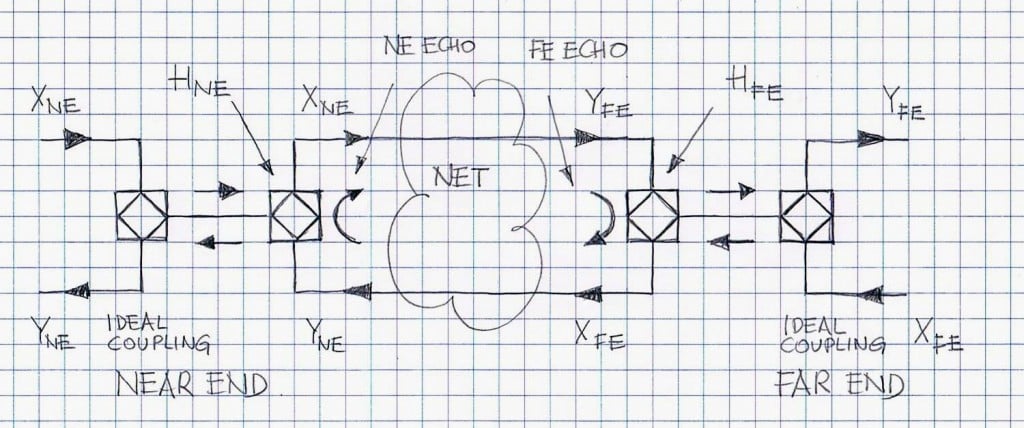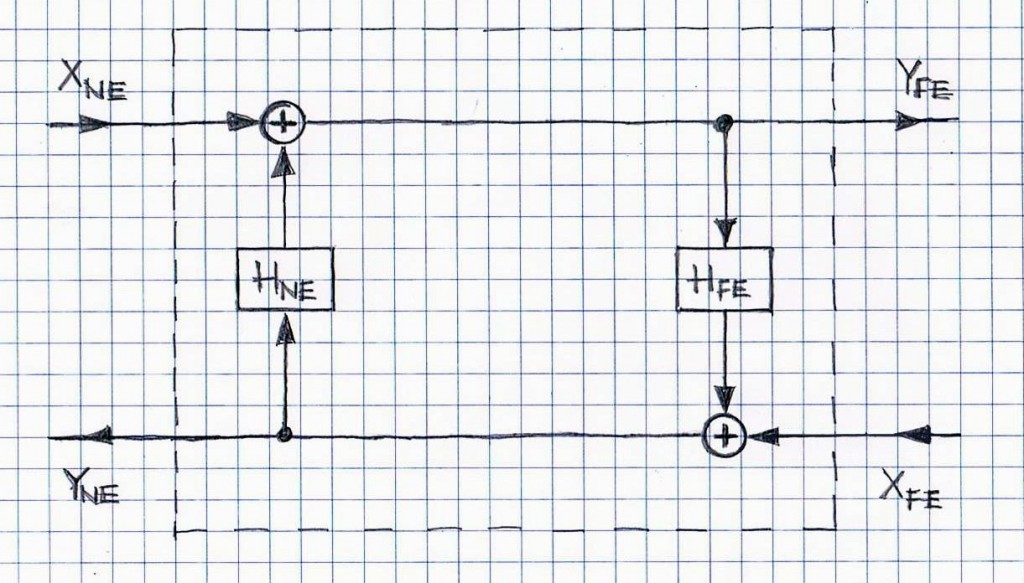The Near-End/Far-End system terminated with either hybrid circuits or acoustic echo paths is potentially unstable. This potential instability is explained below. Figure 1 depicts the system as seen from the input/output signals at both ends of the voice channel. In order to extract TX and RX signals from the 2-wire links, ideal hybrids circuits have been added.

To facilitate the system analysis the network delays have been ignored. A simplified block diagram is depicted in Figure 2.

Let us now express the system in a form of input/output, where the input is X = col[XNE, XFE] and the output is Y = col [YNE, YFE], and the transfer function matrix T is formed of {Tij}, i,j = 1,2, namely
where all quantities as expressed as z-transforms of the respective sampled quantities.
Based on notation used in Figure 2, we can express signal YNE as a combination of XFE and YFE; similarly, we can express YFE as a combination of XNE and YNE, namely
and
and, by resolving it in terms of Y = col [YNE YFE] expressed by X = col[XNE XFE] we arrive at
where
Assuming that both echo paths/echo transfer functions (i.e., HNE(z) and HFE(z) ) are of FIR type we notice that all {Tij}, i,j = 1,2, are of IIR type and their inherent instability comes from zeroes of D(z) (as per Eq.5).
The potential instability of the Near-End/Far-End voice channel system, even without echo cancellers present, is well recognized. It occurs in telecommunication voice channels if the ERL values are too small. The instability effect manifests as generations of periodic signals at frequencies where the ERL values manifested by the hybrid circuits are small and the phase relationship of HNE(z) and HFE(z) for these frequencies, combined with small close loop attenuation creates the positive feedback (i.e., phase and gain conditions produce zeroes of D(z)). In voice telecommunication systems this instability effect is called singing.
In order to prevent the Near-End/Far-End voice channel system from manifesting singing effects, ERL values (which relate to the closed loop gain) should be properly controlled (and the ultimate objective is to keep them large for all frequencies of interest). Typically, in voice channels that include hybrid circuits, transformer balancing impedances should be properly chosen in the process of line provisioning. Other ways of preventing circuits from singing effects include adding an extra loss to the closed-loop transmittance (practically this is achieved by inserting loss pads to the telecommunication circuit hardware/software, as per given provisioning rules). In routine cases related to inserting loss pads (a.k.a. loss elements), the closed loop phase is not directly controlled externally, for simplicity reasons (except when selecting balancing impedances that match given types of lines)
